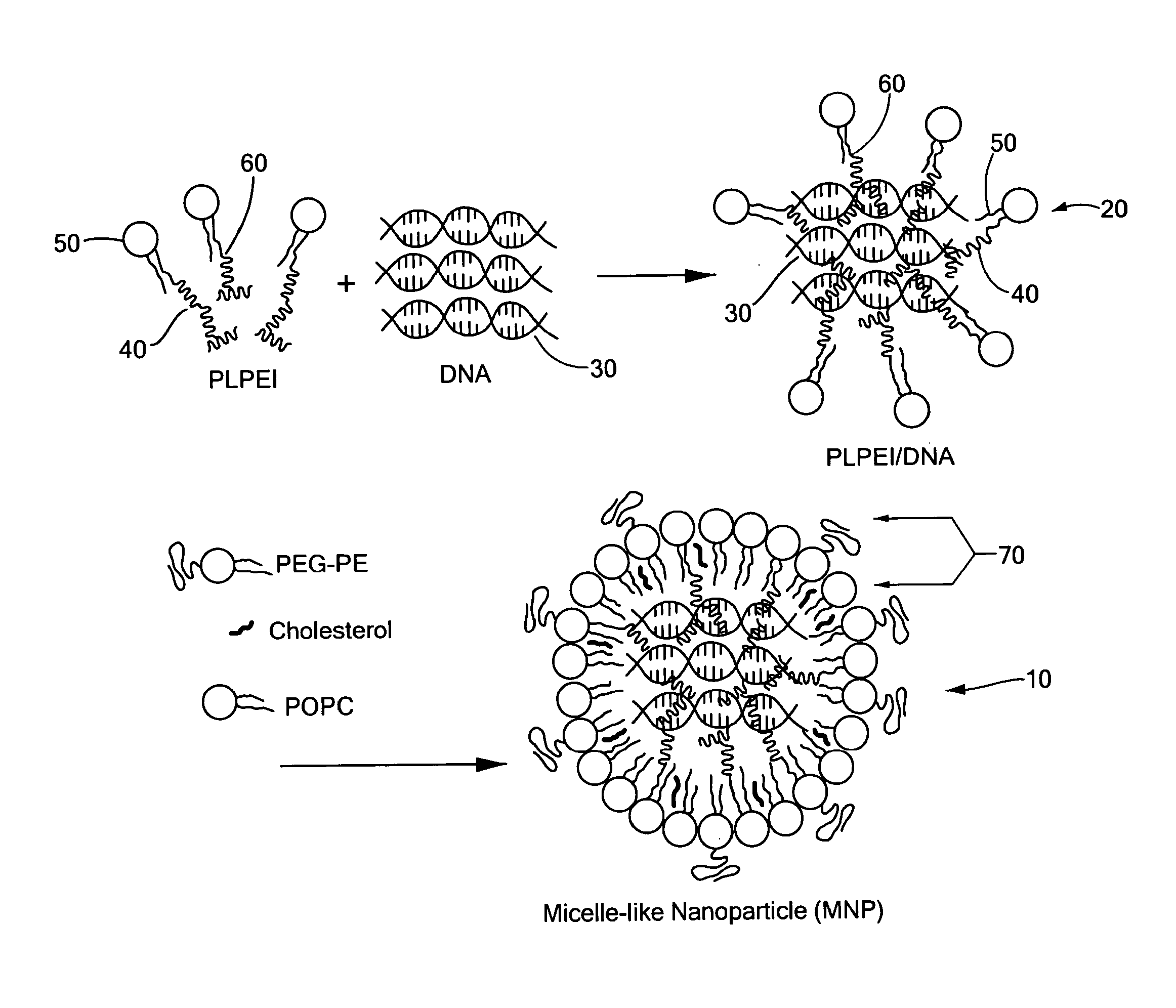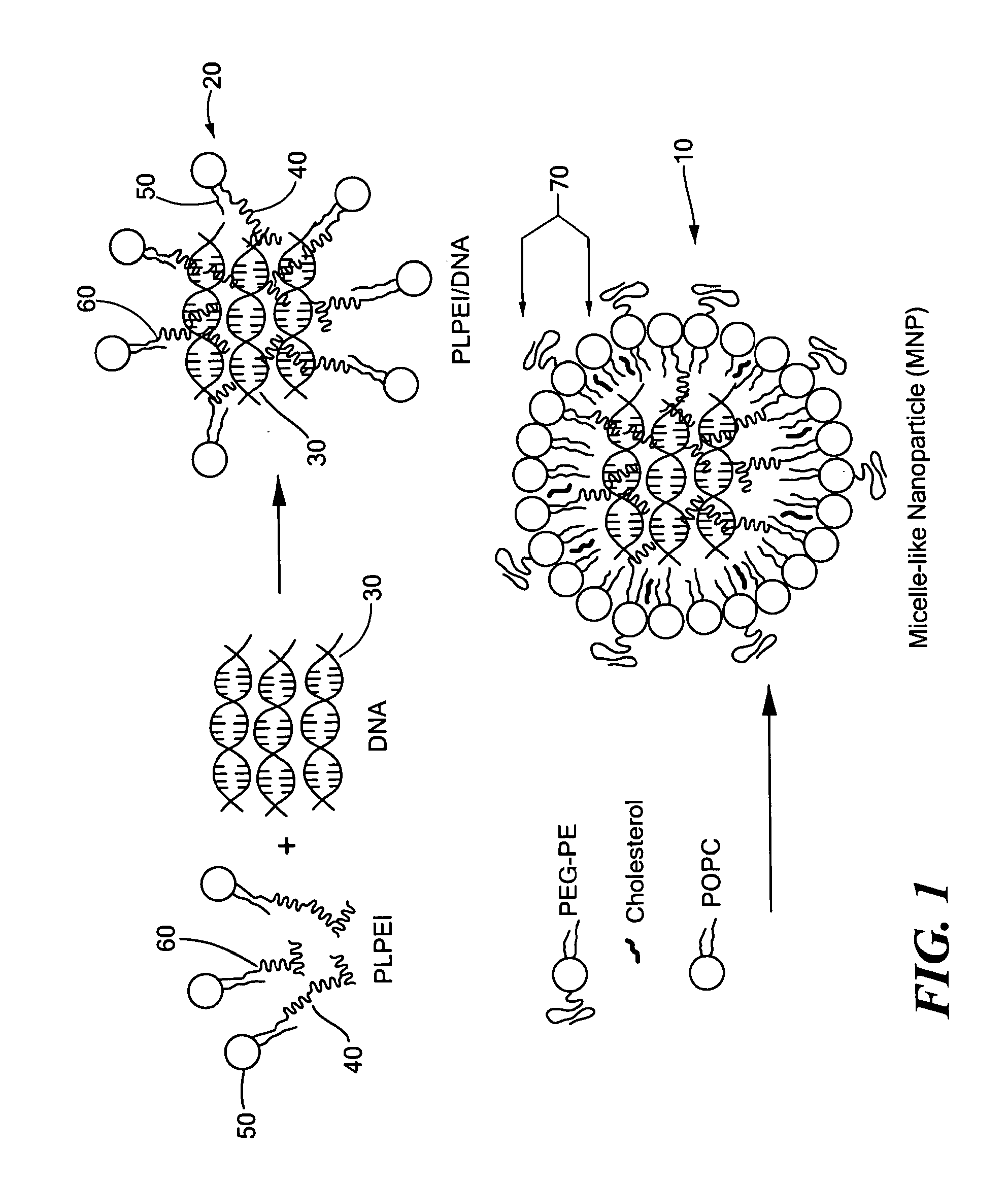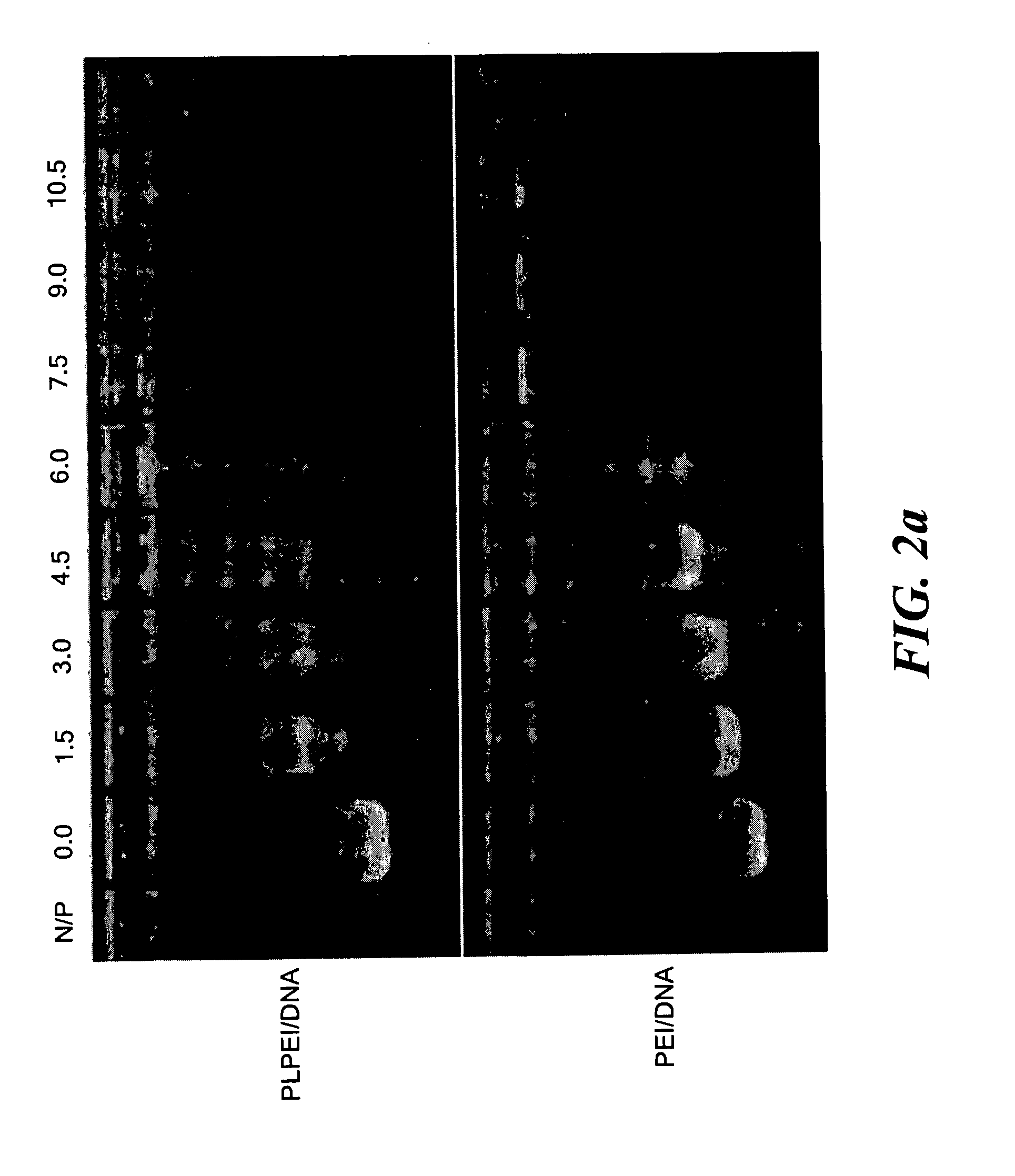Self-assembling micelle-like nanoparticles for systemic gene delivery
a technology of micelle-like nanoparticles and gene delivery, which is applied in the direction of powder delivery, microcapsules, drug compositions, etc., can solve the problems of limited “critical micelle concentration” and the difference between nanoparticles, and achieves simple and reproducible one-step procedure, high loading capacity, and facilitates the self-assembly process.
- Summary
- Abstract
- Description
- Claims
- Application Information
AI Technical Summary
Benefits of technology
Problems solved by technology
Method used
Image
Examples
example i
Preparation of Micelle-Like Nanoparticles (MNP)
[0063]The micelle-like nanoparticles (MNP) were prepared by complexing plasmid DNA with PLPEI and then enveloping the preformed complexes with a lipid layer containing also PEG-phosphatidylethanolamine conjugate (PEG-PE) (FIG. 1). As for the complexation, the optimal ratio of PLPEI to DNA was determined based on the amounts of amine required to completely inhibit DNA migration on an agarose gel, since the complex formation hinders the migration of DNA, retaining the DNA in the wells. Constant amounts of plasmid DNA were mixed with PLPEI at varying amine / phosphate (N / P) ratios and analyzed by agarose gel electrophoresis. The bound fraction of DNA was increased as the N / P ratio increased and the most DNA was bound at an N / P ratio higher than 6. The complexation profile of PLPEI was comparable to that of the unmodified PEI, indicating that the PEI capacity for DNA complexation was not diminished by lipid conjugation (FIG. 2a). An N / P ratio...
example ii
Physicochemical Properties of MNP
[0066]Traditional PEI / DNA polyplexes tend to aggregate rapidly under physiological high salt conditions [8]. To demonstrate the stabilizing effect of the lipid envelope against the salt-induced aggregation, NaCl was added to complex formulations to a final concentration of 0.15M while monitoring the hydrodynamic diameter. As expected, PEI / DNA polyplexes aggregated immediately after adding NaCl with continuous increases in hydrodynamic diameter up to almost 20-folds over a 24 hour period. The intermediate PLPEI / DNA complexes without free lipids and PEG-PE showed a two-fold increase immediately after adding NaCl and then remained relatively constant over the 24 hours. At the same time, MNP remained stable with no significant aggregation upon salt addition for 24 hours (FIG. 3a).
[0067]Zeta potential measurement revealed that MNP have a favorable neutral surface charge of −2.1±0.86 mV (mean±s.e.m., n=5), while PEI / DNA polyplexes have a more toxic positiv...
example iii
In Vivo Biodistribution and Gene Expression
[0070]To demonstrate the prolonged circulation time of MNP in the blood and thus the feasibility of their enhanced delivery to target tissues such as tumors, pharmacokinetic and biodistribution studies were performed with MNP loaded with 111In-DNA in mice. The radioactivity in major organs after i.v. bolus administration of MNP loaded with 111In-DNA was measured and compared to that of control PEI / 111In-DNA complexes. After 10 min, as much as 30% ID / ml of MNP remained in the blood compared to about 10% ID / ml for PEI / DNA polyplexes. At 1 hour post-injection, about 20% ID / ml of MNP was still present in the blood, while only about 5% ID / ml of PEI / DNA polyplexes was detected in the circulation (FIG. 5a).
[0071]The slower clearance and thus more prolonged circulation of DNA in MNP compared to PEI / DNA were also confirmed by pharmacokinetic parameters. The half-life (t1 / 2 beta) was estimated by fitting the blood concentration data colleted to 60 mi...
PUM
| Property | Measurement | Unit |
|---|---|---|
| diameter | aaaaa | aaaaa |
| molecular weight | aaaaa | aaaaa |
| diameter | aaaaa | aaaaa |
Abstract
Description
Claims
Application Information
 Login to View More
Login to View More - R&D
- Intellectual Property
- Life Sciences
- Materials
- Tech Scout
- Unparalleled Data Quality
- Higher Quality Content
- 60% Fewer Hallucinations
Browse by: Latest US Patents, China's latest patents, Technical Efficacy Thesaurus, Application Domain, Technology Topic, Popular Technical Reports.
© 2025 PatSnap. All rights reserved.Legal|Privacy policy|Modern Slavery Act Transparency Statement|Sitemap|About US| Contact US: help@patsnap.com



